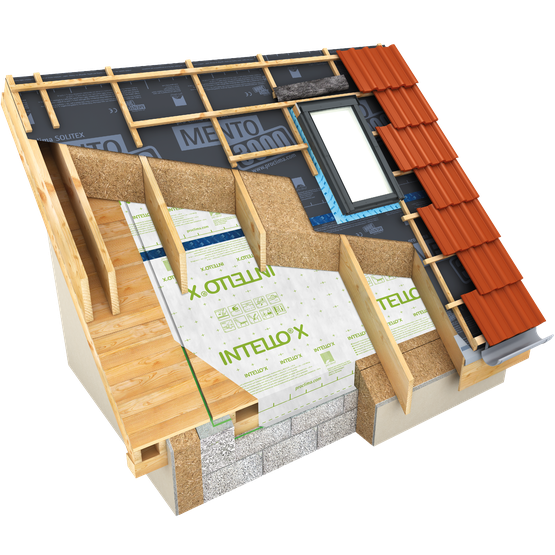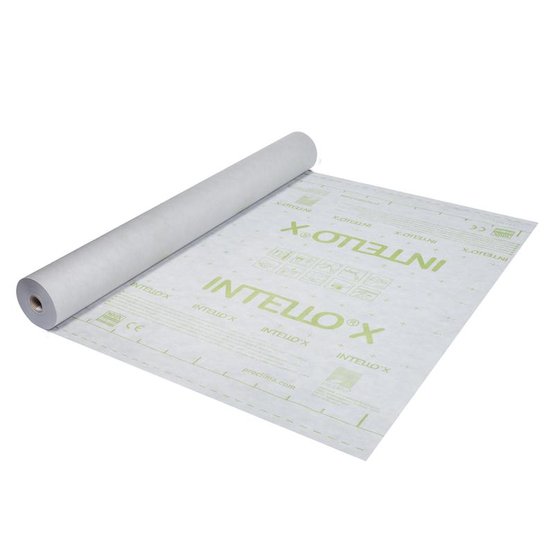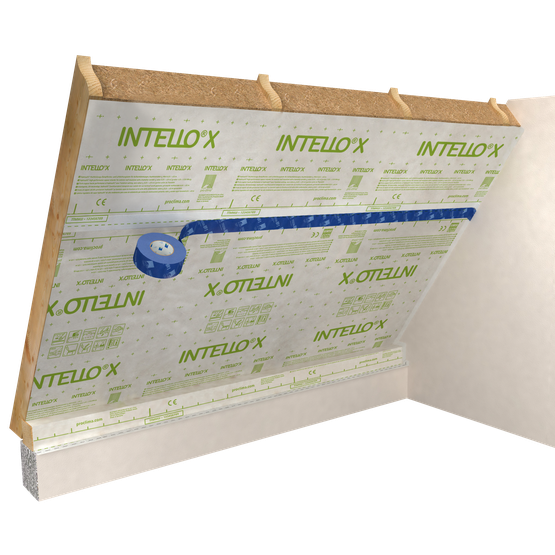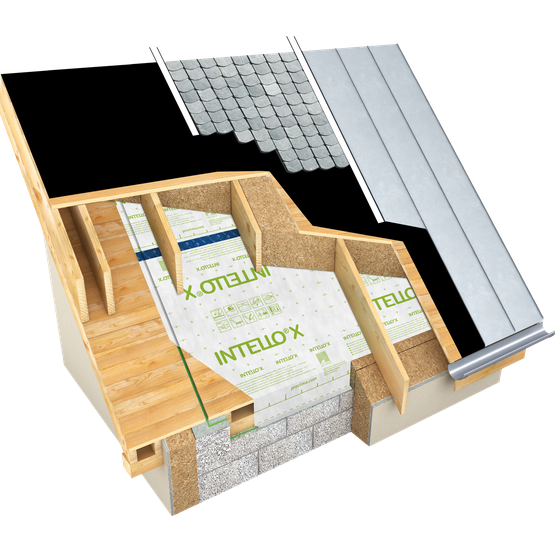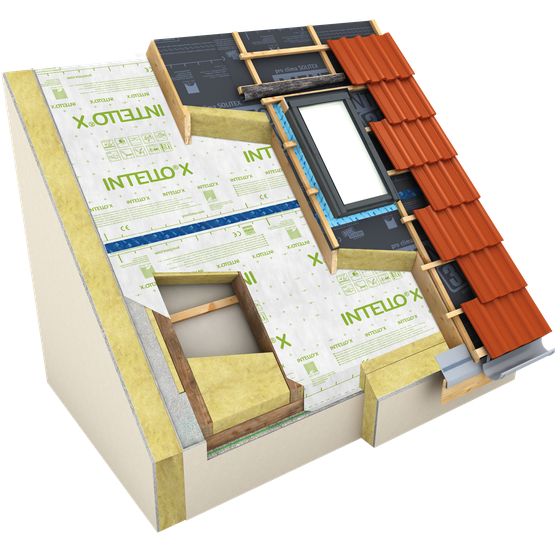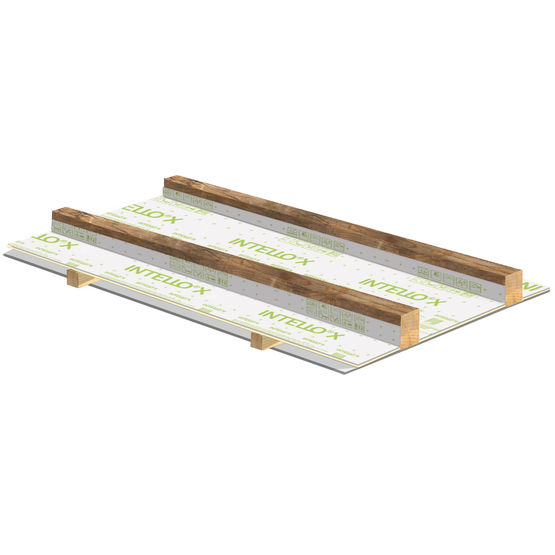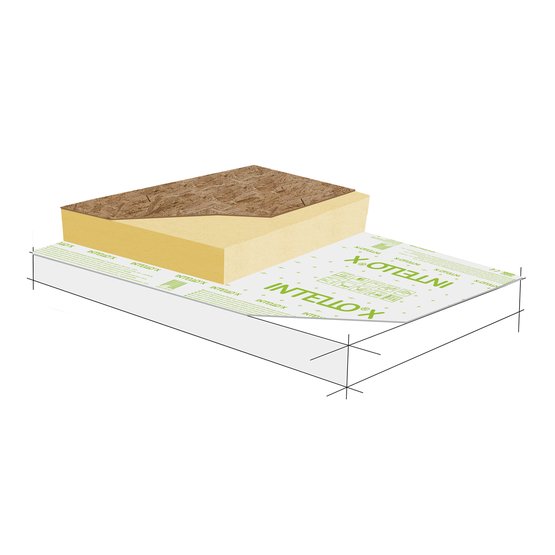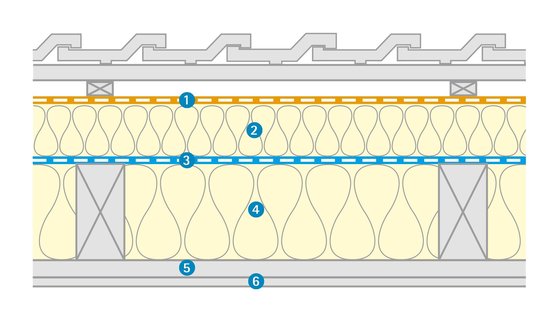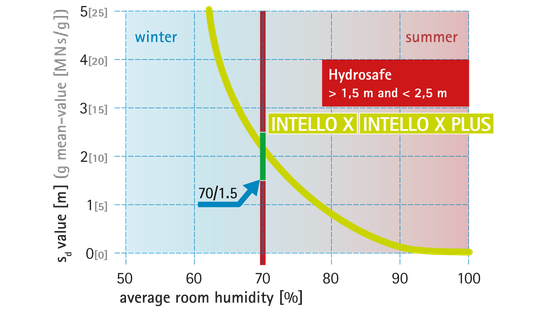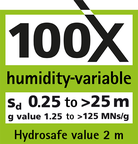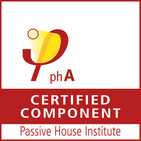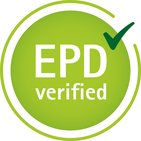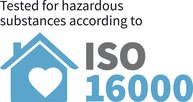All-round hydrosafe® high-performance vapour control membrane
Advantages
- Excellent protection against mould and moisture damage to structures thanks to humidity-variable diffusion resistance
- Easier handling: can be used with insulation installed between rafters/framework, with external insulation and – in the case of refurbishment from the outside – between two layers of mineral wool insulation
- Protects building structures against weathering during the construction phase for roof pitches of 10° (2.1:12) and higher
- Protected winter building sites thanks to hydrosafe® behaviour
- Excellent values in hazardous substance testing, has been tested according to the ISO 16000 evaluation scheme
Areas of application
Vapour control (alternate terms: vapour check or retarder) membrane for use on the inside of insulation installed between rafters or wall framework, in combination with fibrous insulation mats and boards. Can be installed directly on top of sheathing for use underneath exterior insulation, also in combination with blown-in insulation materials.
This membrane can be permanently exposed to diffuse UV light – e.g. in areas without inner cladding.
In the case of refurbishment from the outside and installation between two layers of insulation, the choice of insulation materials for the two layers is limited to mineral or rock wool. The thickness of the external mineral wool insulation needs to be calculated on a project-specific basis; please contact Technical Support at pro clima in Germany for assistance.
This membrane can be used on building structures that are diffusion-open to the outside or are diffusion-tight, e.g. pitched, flat or green roofs, after appropriate design calculations have been carried out.
Planning and installation instructions
Areas of application
The high-performance INTELLO X vapour control (alternate terms: vapour check or retarder) membrane, which can be subjected to outdoor exposure and has a humidity-variable sd value (g value; US perms), can be used:
- On the inside of supporting structures – even in areas where the membrane will be permanently exposed to diffuse UV light, such as areas without inner cladding
- Directly on top of sheathing, underneath exterior insulation
- For roof refurbishment from the outside with installation between two layers of mineral or rock wool insulation – after appropriate design calculations have been carried out by pro clima technical Support in Germany
- For roof refurbishment from the outside with installation of membranes in the form of ‘troughs’ in the spaces between the rafters
- As a membrane that can be walked on, even underneath insulation layers on hard subsurfaces such as sheathing – e.g. on the floor of a cold attic
- On residential buildings or commercial buildings with residential-like use in all rooms such as living rooms, bedrooms, kitchens and bathrooms
- On structures open to diffusion on the exterior and those that are closed to diffusion on the exterior
Use even on structures with demanding construction physics conditions
Compared to other products on the global marketplace, INTELLO X also provides excellent protection against moisture damage to structures – even for locations with very cold climates – for critical structures that are closed to diffusion on the exterior, such as pitched roofs with metal coverings, roofing underlays with asphalt roof membranes, flat roofs and green roofs etc.
Note
Please note that the task of providing moisture protection forms part of the construction design and verification process. For further information in this regard, please contact our Technical Support.
2 months of outdoor exposure
INTELLO X can be subjected to outdoor exposure for up to 2 months to protect the building structure. In the case of roof refurbishment from the outside and installation between two layers of insulation, the outdoor exposure period is reduced to 14 days (7 days for ≤10 °C). Within this period, external roof insulation must be installed with the thickness required to provide moisture protection for the building structure. The thickness of the external mineral wool insulation needs to be calculated on a project-specific basis. Please contact Technical Support at pro clima in Germany for assistance. The minimum roof pitch is 10° (2.1:12).
Please note that INTELLO X does not provide sealing that is equivalent to an emergency roof.
Moisture can enter at staples or other perforations (nails, screws etc.). In addition, covering with tarpaulins is recommended for buildings that people are living in or that are particularly worthy of protection.
Use of fibrous insulation materials
The high degree of protection against moisture damage to structures offered by humidity-variable vapour control membranes is achieved by using fibrous thermal insulation materials that are open to diffusion, as the moisture must be able to diffuse through to the vapour control membrane for the purpose of drying during the summer climate.
Fibrous thermal insulation materials such as cellulose, flax, hemp, wood fibre and rock or mineral wool are ideal here.
Use of diffusion-open interior cladding
To take full advantage of the potential of humidity-variable vapour control membranes to provide protection against moisture damage to structures, diffusion-open cladding should be installed internally, over the vapour control membrane – e.g. gypsum boards or wooden board cladding.
Areas without inner cladding
The airtightness and windtightness layer is one of the most important functional layers on thermally insulated structures. For this reason, these layers need to be protected against potentially damaging influences such as mechanical stresses and UV radiation. The German standard DIN 68800-2 stipulates that UV-resistant layers should be installed within a period of 3 months if no separate certification of service life is available.
The membranes in the INTELLO X product line provide an increased level of UV protection thanks to their protective and covering fleece on both sides. They can be left uncovered permanently in the case of diffuse UV radiation.
This does not apply to areas with strong direct UV radiation, e.g. the window reveals of skylights in unconverted attics. These and other comparable areas should be protected within 18 months of installation by means of a UV-resistant covering (e.g. plasterboard).
Refurbishment from the outside
Between-rafter and over-rafter insulation both mineral wool.
Refurbishment solution:
1. Roofing underlay membrane e.g. SOLITEX MENTO 3000
2. Over-rafter insulation, mineral wool
3. INTELLO X / connect / INTELLO X PLUS
4. Insulation between rafters/framework, mineral wool
5. Service cavity, if necessary
6. Inner cladding
In the case of refurbishment from the outside and installation between two layers of insulation, the choice of insulation materials for the two layers is limited to mineral or rock wool. The thickness of the external mineral wool insulation needs to be calculated on a project-specific basis. Please contact Technical Support at pro clima in Germany for assistance.
Increased indoor humidity
INTELLO X has been designed in such a way that a reliable vapour-controlling effect is ensured even in the case of increased indoor humidity for limited periods, which can occur in new buildings as a result of construction work or during short-term increases in relative humidity in bathrooms or kitchens, for example.
Construction phase: hydrosafe® value (70/1.5 rule)
A vapour control membrane should have a hydrosafe® value of 1.5 m in order to protect structures against dampness even in the case of the increased relative humidity that can be present during construction work.
The hydrosafe® value specifies how well sealed a humidity-variable vapour control membrane still is at an average humidity of 70% (e.g. at 90% indoor air humidity and 50% humidity in the space between the rafters) – these values can be achieved when screed is being installed or walls are being plastered.
The requirement that sd should be > 1.5 m and < 2.5 m comes from DIN 68800-2 and is described in further detail by the 70/1.5 rule. The INTELLO X series fulfils these requirements reliably.
Regardless of the type of vapour control membrane used, moisture due to construction work must always be removed from the building structure quickly by ventilation through open windows so that a normal moisture level can be achieved. Dryers can help to speed up the drying process in wintertime.
Quality assurance
In the case of membrane installation on the exterior, efficient quality assurance can be carried out during the course of construction by means of differential pressure testing with overpressure and artificial fog. As part of this testing, fog is generated inside the building using a fog machine. In this way, the airtightness of detail features can be checked and rectified on the exterior. The membranes must be mechanically secured to a sufficient extent beforehand. For this reason, taped and adhesive joints are to be implemented with particular care.
Detailed construction planning – particularly of joints at the eaves and gable ends and the implementation of these joints on roof refurbishment projects – is particularly important. In Germany, this quality assurance during the course of construction is no substitute for final testing of airtightness in accordance with the German Building Energy Act (GebäudeEnergieGesetz, GEG) or the requirements of the German Reconstruction Loan Corporation (KfW) regarding the determination of the air change rate (n50 value).
Technical support
If you have questions on applications, please contact our Technical Support.



